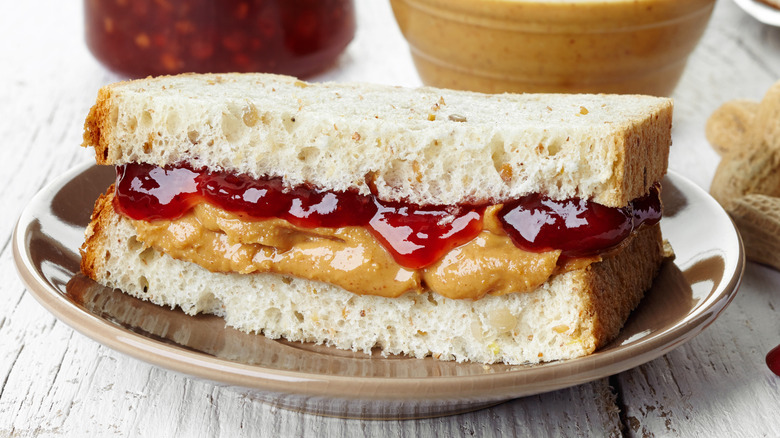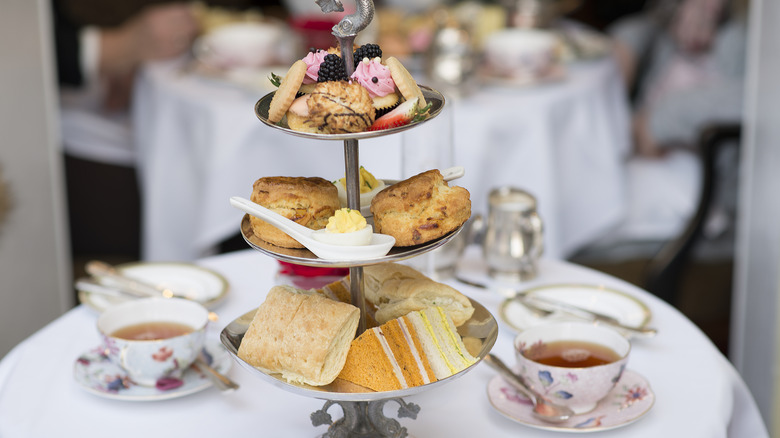Peanut Butter And Jelly Sandwiches Were Once Considered A Fancy Treat
A staple in kid's lunchboxes and the ultimate satisfying snack in the middle of the night, the mighty peanut butter and jelly sandwich could arguably be something that almost every kitchen in America is stocked to make at any time. The South Florida Reporter suggests that 94% of American households have at least one jar of peanut butter in their home as of 2020. Aside from the nutty and sweet taste that appeals to children and adults, PB&J's are very affordable to make and eat — but this wasn't always the case.
When it first debuted in the late 1800s, peanut butter was expensive and elusive. It wasn't until the 1920s that the price of peanut butter declined due to mass production, making it more accessible to people outside of the highest income brackets, per Smithsonian Magazine. Around the same time, the brand Skippy saw an untapped market among the nation's children and began to heavily market the affordable spread to them.
But the PB&J didn't take the nation by storm until after World War II. The soldiers who returned home became familiar with the sandwich because their ration packs during the war included sliced bread, peanut butter, and jelly, which they ingeniously combined. Naturally, they shared the creation with their families and children, and, voilà, a phenomenon was born. However, you may be surprised to learn that there were a group of individuals who enjoyed this combination before those in combat did.
Peanut butter and jelly sandwiches were originally served in tea rooms
In the late 19th century, well-to-do ladies gathered in tea rooms or in each other's homes to enjoy lunches, according to Smithsonian Magazine. Tea sandwiches were often served as small, crust-free triangles of bread with cucumbers, meats, and cheeses inside. During the same time period, John Harvey Kellogg (yes, the guy behind all the cereals) and other food developers began advocating a little-known treat called peanut butter as a healthier alternative to butter.
This interested the ladies who lunched and, soon, posh tea parlors began incorporating peanut butter into their menus. The National Peanut Board states that the Vanity Fair Tea Room in New York served peanut butter and watercress sandwiches, with other tea rooms preferring to pair the spread with pimentos. It seemed that peanut butter had found a niche in upper-crust society (no pun intended).
Jelly didn't join its most famous partner until 1901 when Julia Davis Chandler submitted a recipe to Boston Cooking School Magazine which directed ladies to fill small, three-layered sandwiches with peanut butter and currant or crabapple jelly, a combination she called "delicious" and "original," (via Smithsonian Magazine). It was a combination that caught on and remains a satisfying duo for many modern-day kitchens.
It can be modified to your taste, like adding bananas and bacon, substituting almond butter for peanut butter, or upgrading it by giving it a grill for a nice crunchy exterior. Once served with sophistication, the PB&J is a simple staple sandwich for anyone to enjoy — whether at a garden party or as an after-school snack.

